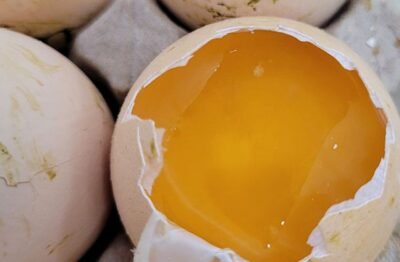Analysis of perforated embryos (PIPs)

Dr. Majed Hamid Al-Saegh / Australia
Perforated embryo analysis (PIPs) is a diagnostic technique used in hatcheries to evaluate the impact of transmission of vertical diseases, such as Mycoplasma gallisepticum (MG) and Mycoplasma synovial (MS), by examining unhatched perforated eggs. Here’s a detailed explanation:
- Examining perforated embryos: The technique involves examining embryos that have begun to perforate, meaning they have broken through the inner shell membrane and entered the air chamber but have not yet fully hatched.
- Timing: This usually occurs around the 18th day of incubation when the embryo’s beak penetrates the air chamber and then attempts to break the shell.
The purpose:
- Evaluation of vertical disease transmission: Evaluation of the impact of transmission of vertical diseases, such as mycoplasma, from maternal flocks to their offspring.
- Evaluation of the severity of lesions: Evaluation of the severity of lesions in the air sacs caused by infection in fetuses.
Action:
- Sample collection: Collect a sample of at least 25 perforated embryos per herd.
- Inspect air bags: Inspect air bags to look for lesions and rank them on a scale of one to four based on severity:
1x: slight involvement of the thoracic air sac.
2x: more severe lesions.
3x: Severe lesions in multiple air sacs.
4x: All airbags filled with cheesy content (the most severe).

The benefits:
- Vertical transmission rate: Provides insights into the rate of vertical transmission and the severity of infection.
- Evaluating the effectiveness of measures: Helps monitor and evaluate the effectiveness of control measures, such as vaccination, antibiotic treatment, and biosecurity practices.
- Improving hatchability: Identifies potential problems in maternal flocks that could affect hatchability and chick quality.
Results :
- Good control: Less than 10% of positive embryos indicate good control of mycoplasma.
- Moderate dominance: 10-25% of positive embryos indicate moderate dominance.
- Corrective measures: More than 25% of positive embryos indicate the need for urgent corrective measures due to the high rate of vertical transmission.
Conclusion:
PIPs analysis is a valuable tool for hatcheries to ensure better management of mycoplasma infections, improve the health and production standards of mother stock, and enhance the quality of newly hatched chicks. Through this analysis, breeders can identify problems and take the necessary corrective actions to maintain herd health and productivity. Reduce the economic impacts of this Mycoplasma infection on poultry health and productivity.
One Comment
Leave A Comment
You must be logged in to post a comment.




ممتاز